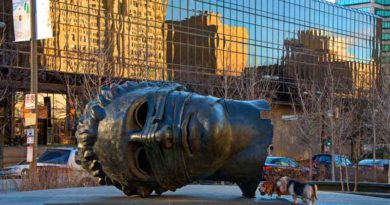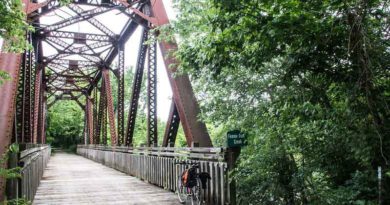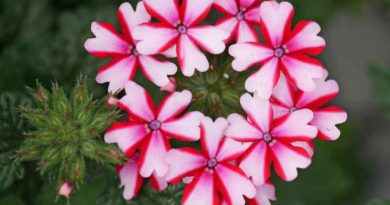Mastering Beekeeping: Best Practices for Healthy, Thriving Hives
Beekeeping is an ancient practice that provides numerous benefits, from honey production to pollination services for plants. To ensure the health and productivity of your honey bee colonies, it’s essential to follow best management practices. In this comprehensive guide, we will discuss the top strategies for optimizing your apiary location and setup, hive inspection and maintenance, nutrition and feeding, disease and pest management, swarm prevention, queen management, and honey harvesting.
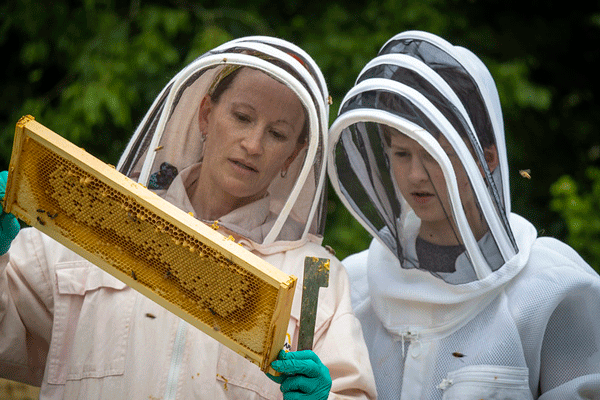
Apiary Location and Setup
Choosing the right location and setup for your apiary (Beerhouse/Beehive) is crucial for the well-being and productivity of your colonies. Consider the following factors:
Sun Exposure
Select a site with ample sunlight, particularly in the morning. This encourages bees to start foraging early in the day. Avoid heavily shaded areas, as they can lead to increased moisture and coldness within the hive, which can negatively impact the colony’s health.
Wind Protection
Protect your apiary from strong winds by positioning it near natural windbreaks like trees, hedges, or structures. If necessary, construct an artificial windbreak to shield your hives from prevailing winds.
Accessibility
Ensure your apiary is easily accessible year-round for hive inspections and maintenance. Consider access to water sources, foraging areas, and the availability of nearby parking or equipment storage.
Foraging Resources
Choose a location with diverse and abundant foraging resources within a 3-mile radius of your apiary. This includes flowering plants, trees, and water sources. Be mindful of pesticide use in the surrounding area, as it can negatively impact bee health.
Hive Spacing
Space your hives at least 2-3 feet apart to allow for proper air circulation, sunlight exposure, and ease of hive inspections. Arrange hives in a way that the entrances face in different directions to minimize drifting of bees between colonies.
Hive Stand
Elevate your hives on sturdy hive stands, at least 12 inches off the ground. This helps prevent dampness and reduces the risk of pests like ants or skunks gaining access to the hive.
Water Source
Provide a clean and consistent water source within ¼ mile of your apiary. Bees need water for cooling and maintaining the hive’s humidity. Offering a nearby water source can reduce the risk of bees seeking water from neighbors’ pools or other undesirable locations.
Apiary Expansion
Consider future apiary expansion when selecting your location. Ensure there is sufficient space to add additional hives as your beekeeping operation grows.
Taking these factors into account will create an optimal environment for your honey bee colonies, ensuring their health and productivity.
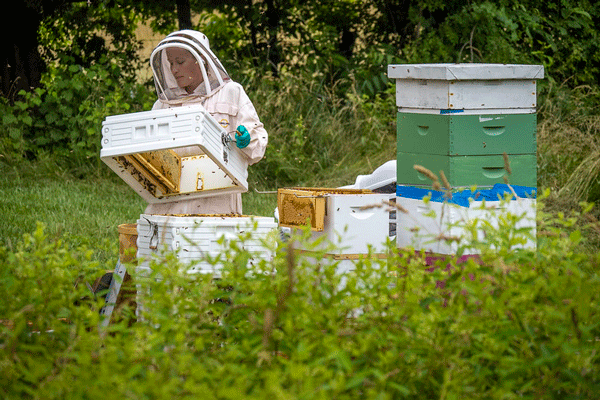
Hive Inspection and Maintenance
Regular hive inspection and maintenance are essential for monitoring colony health, preventing disease and pest infestations, and ensuring the overall well-being of your bees. The following guidelines will help you establish a comprehensive inspection and maintenance routine:
Inspection Frequency
Inspect your hives every 7-10 days during the active season (spring and summer) to monitor colony growth, identify potential issues, and address them promptly. In colder months, reduce the inspection frequency to avoid chilling the colony and causing undue stress.
Inspection Tools
Prepare your inspection tools beforehand, including a bee suit, gloves, a smoker, a hive tool, and a notebook to record observations. Ensure your tools are clean and in good condition to minimize the risk of spreading disease or pests.
Smoke Application
Use a smoker to calm the bees during the inspection. Light the smoker with fuel such as pine needles, burlap, or wood shavings, and gently puff smoke around the entrance and under the hive cover. Wait a few minutes for the bees to settle before proceeding with the inspection.
Hive Inspection Process
During the inspection, check the following aspects of your hive:
- Colony population: Assess the population size, looking for a healthy number of bees and brood in all stages (eggs, larvae, and pupae). A declining population may indicate queen or health issues.
- Queen health: Look for the queen or signs of her presence, such as freshly laid eggs. If the queen is absent or not performing well, consider requeening the colony.
- Honey and pollen stores: Ensure there are sufficient honey and pollen stores to support colony growth and survival, especially during the winter months.
- Comb and frame condition: Inspect the comb and frames for any signs of damage or disease, and replace as necessary.
- Disease and pest presence: Check for signs of common diseases and pests, such as American foulbrood, Varroa mites, or small hive beetles, and treat accordingly.
Record-Keeping
Document your observations, including colony population, queen status, honey and pollen stores, and any signs of disease or pests. Maintain accurate records to track colony health and growth over time, enabling you to make informed management decisions.
Hive Maintenance
Regularly clean and maintain hive components, such as bottom boards, frames, and covers. Replace damaged or deteriorating equipment to ensure a healthy and hygienic environment for your bees.
By following these guidelines for hive inspection and maintenance, you can proactively address potential issues and ensure the health and productivity of your honey bee colonies.
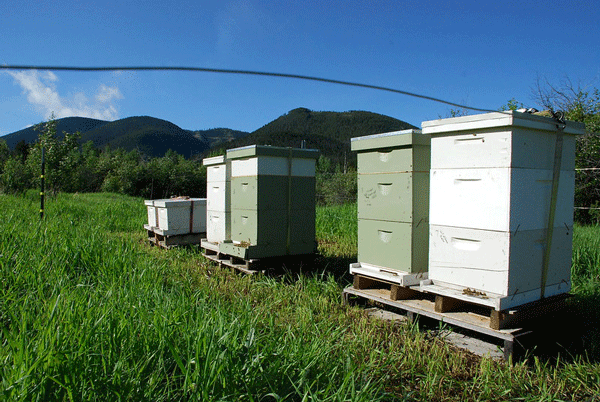
Nutrition and Feeding
Proper nutrition is critical for the health and productivity of your honey bee colonies. Bees require a balanced diet of carbohydrates, proteins, lipids, vitamins, and minerals to thrive. This section will cover essential feeding practices to ensure your colonies receive adequate nutrition.
Natural Forage
A diverse and abundant supply of natural forage is crucial for the well-being of honey bees. Monitor the availability of flowering plants, trees, and shrubs within a 3-mile radius of your apiary. Encourage landowners and local authorities to plant bee-friendly vegetation to support healthy foraging opportunities for your colonies.
Supplemental Feeding
In certain situations, supplemental feeding may be necessary to maintain the health and vitality of your colonies. These situations include:
- During periods of nectar and pollen dearth
- When preparing colonies for winter
- After installing a new package of bees or a nucleus colony
Carbohydrate Feeding
Provide a carbohydrate source, such as sugar syrup or fondant, to supply energy to your bees. To make sugar syrup, mix white granulated sugar with water at a 1:1 ratio (by weight) for spring feeding or a 2:1 ratio for fall feeding. Do not use brown sugar, molasses, or artificial sweeteners, as they can be harmful to bees.
Protein Feeding
If pollen resources are scarce, offer protein supplements in the form of pollen patties or dry pollen substitutes. Commercially available pollen supplements typically contain a mix of protein, lipids, vitamins, and minerals to mimic the nutritional content of natural pollen.
Feeding Techniques
When providing supplemental feed, choose a method that minimizes drowning and robbing:
- Entrance feeders: Place feeders at the hive entrance, allowing bees to access the food easily. However, entrance feeders may encourage robbing by other colonies or pests.
- Top feeders: Place feeders on top of the hive, under the hive cover. Top feeders reduce the risk of robbing and provide a larger feeding capacity.
- Frame feeders: Insert feeders directly into the hive, replacing one or more frames. Frame feeders minimize robbing but may require more frequent refilling.
Monitoring and Adjusting Feed
Regularly monitor the consumption of supplemental feed and adjust the quantity and frequency as needed. Be cautious not to overfeed, as it can lead to excessive brood production, insufficient storage space for honey, and increased swarming tendencies.
By providing your honey bee colonies with a balanced diet and proper nutrition, you can support their health, productivity, and resilience in the face of challenges.
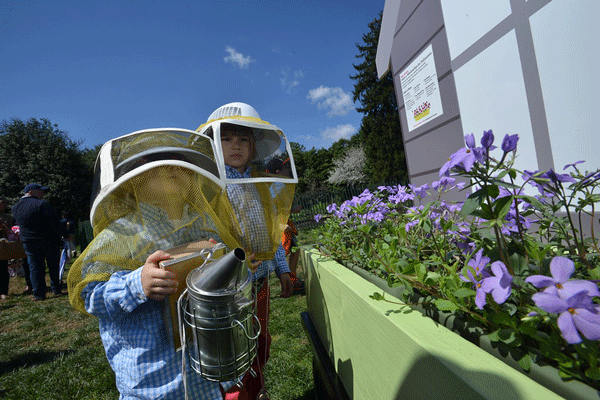
Disease and Pest Management
Effective disease and pest management are essential for maintaining healthy, thriving honey bee colonies. Early detection and prompt treatment can prevent significant losses and ensure the long-term success of your beekeeping operation. This section covers the most common honey bee diseases and pests, along with recommended management strategies.
American Foulbrood (AFB)
AFB is a highly contagious bacterial disease that affects honey bee larvae, causing a rapid collapse of the colony. To manage AFB:
- Regularly inspect your hives for signs of AFB, such as discolored, sunken, or punctured brood cappings.
- If AFB is suspected, immediately quarantine the affected hive(s) and contact your local apiary inspector for confirmation and guidance.
- Burn infected equipment and bees to prevent the spread of AFB. Do not reuse contaminated equipment.
- Implement a strict hygiene protocol, including the disinfection of tools and equipment, to prevent cross-contamination between hives.
Varroa Mites
Varroa mites are external parasites that weaken bees and transmit harmful viruses. To manage Varroa mites:
- Monitor mite levels using a sticky board, sugar roll, or alcohol wash method.
- Implement an Integrated Pest Management (IPM) approach, combining cultural, mechanical, and chemical control methods.
- Use mechanical controls, such as drone brood trapping and screened bottom boards, to reduce mite populations.
- Rotate chemical treatments, such as formic acid, oxalic acid, or synthetic acaricides, to prevent mite resistance.
Small Hive Beetles (SHB)
SHB are invasive pests that can damage honey, pollen, and brood, leading to colony collapse. To manage SHB:
- Keep strong, healthy colonies, as they are more capable of defending against SHB infestations.
- Regularly inspect hives for signs of SHB, such as adult beetles or larvae in the hive.
- Use beetle traps or oil pans to capture and remove adult beetles.
- Maintain a clean apiary, eliminating potential hiding spots for SHB, such as debris or vegetation.
Nosema
Nosema is a fungal disease that affects the honey bee’s digestive system, leading to reduced foraging efficiency and colony decline. To manage Nosema:
- Provide adequate nutrition and clean water sources to support the colony’s immune system.
- Regularly inspect for signs of Nosema, such as fecal staining on the hive exterior or weakened colony performance.
- If Nosema is suspected, consult a laboratory for diagnostic testing.
- Treat infected colonies with an approved fungicide, such as fumagillin, following label instructions and local regulations.
General Prevention Measures
Adopt these general prevention measures to minimize the risk of disease and pest infestations:
- Maintain strong, well-nourished colonies.
- Implement regular hive inspections and monitor for signs of disease or pests.
- Practice good apiary hygiene, including cleaning and disinfecting tools, equipment, and hive components.
- Rotate old comb and replace it with new foundation to reduce the buildup of pathogens and chemical residues.
- Register your apiary with local authorities to stay informed about disease and pest outbreaks in your area.
By following these disease and pest management strategies, you can safeguard the health of your honey bee colonies and ensure their continued productivity.
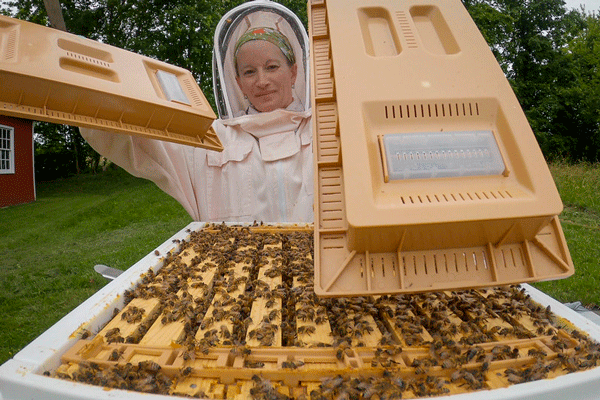
Swarm Prevention and Management
Swarming is a natural process where a colony splits, with a portion of the bees and the old queen leaving to establish a new colony. While swarming is essential for honey bee population growth, it can lead to reduced honey production and pose challenges for beekeepers. This section covers strategies for swarm prevention and management.
Swarm Prevention Measures
Implementing the following measures can help reduce the likelihood of swarming:
Provide Space
Ensure that your colonies have adequate space for brood rearing and honey storage. Add supers or brood boxes as needed, and regularly inspect hives for signs of overcrowding.
Maintain Young Queens
Younger queens are less likely to swarm than older queens. Consider requeening your colonies every 1-2 years to keep the queen’s age and pheromone production optimal.
Use Swarm-Resistant Bee Races
Some honey bee races, such as Carniolan bees, are less prone to swarming. Consider incorporating these races into your apiary to reduce swarming tendencies.
Clip the Queen’s Wings
Clipping one of the queen’s wings can prevent her from flying during a swarm, discouraging the other bees from leaving. However, this method may result in a colony replacing the queen prematurely.
Swarm Detection
Regular hive inspections can help you identify early signs of swarming, such as the construction of queen cells or increased drone production. Address these signs promptly to prevent the swarm from leaving the hive.
Swarm Management Techniques
If a swarm is imminent or has already occurred, use the following techniques to manage the situation:
Artificial Swarming
Create an artificial swarm by removing the old queen and a portion of the worker bees from the original colony and placing them in a new hive. This method simulates the natural swarming process, reducing the colony’s inclination to swarm further.
Splitting the Colony
Split the original colony into two or more smaller colonies, each with its own queen or queen cell. This method not only reduces the likelihood of swarming but also helps increase the number of colonies in your apiary.
Swarm Capture
If a swarm has already left the hive, capture it by gently brushing or shaking the clustered bees into a suitable container or a new hive. Once the queen is inside, the remaining bees will follow. Reintroduce the swarm to a new hive location, and provide adequate resources to ensure its survival.
By implementing these swarm prevention and management strategies, you can minimize the impact of swarming on your beekeeping operation and maintain the productivity of your honey bee colonies.
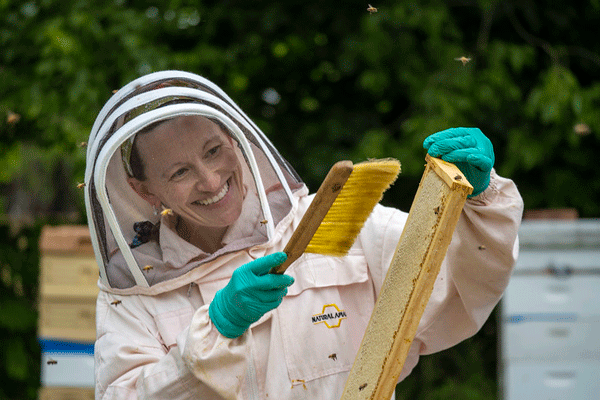
Queen Management
Queen management is a crucial aspect of successful beekeeping, as the queen directly influences the productivity, health, and behavior of the entire colony. Proper queen management practices ensure that your colonies maintain a strong and healthy laying queen, resulting in optimal colony performance. This section covers essential queen management techniques.
Queen Selection
When selecting a queen for your colony, consider the following traits:
- Genetic lineage: Choose queens from reputable breeders with known genetic lines that exhibit desirable characteristics, such as disease resistance, high honey production, and low swarming tendencies.
- Mating performance: A well-mated queen will have a higher sperm count and better sperm viability, resulting in a more productive and longer-lived colony.
- Age: Younger queens have higher pheromone production and a more consistent laying pattern, making them less likely to swarm and more effective in maintaining colony cohesion.
Queen Introduction
Introducing a new queen to a colony requires careful management to ensure acceptance and successful integration. Follow these steps for successful queen introduction:
- Remove the old queen from the colony 24 hours before introducing the new queen.
- Place the new queen, still in her cage, into the hive, ensuring that the candy plug is accessible to the worker bees.
- Allow the worker bees to release the queen by eating through the candy plug, which typically takes 1-3 days. This gradual release gives the colony time to acclimate to the new queen’s pheromones.
- Monitor the colony for signs of queen acceptance, such as calm behavior and the presence of newly laid eggs.
Requeening
Regular requeening is an essential part of queen management. Replacing the queen every 1-2 years helps maintain optimal colony performance by ensuring a young, productive queen with strong pheromone production. Requeening can also help control swarming tendencies, as younger queens are less likely to swarm.
Monitoring Queen Performance
Regularly assess your queen’s performance through hive inspections. Signs of a healthy, productive queen include:
- A consistent brood pattern with few empty cells
- An appropriate balance of worker brood, drone brood, and food stores
- A calm and cohesive colony
If you observe signs of poor queen performance, such as a spotty brood pattern or a dwindling population, consider requeening the colony to address the issue.
By implementing effective queen management practices, you can maintain healthy, productive colonies that contribute to the success of your beekeeping operation.
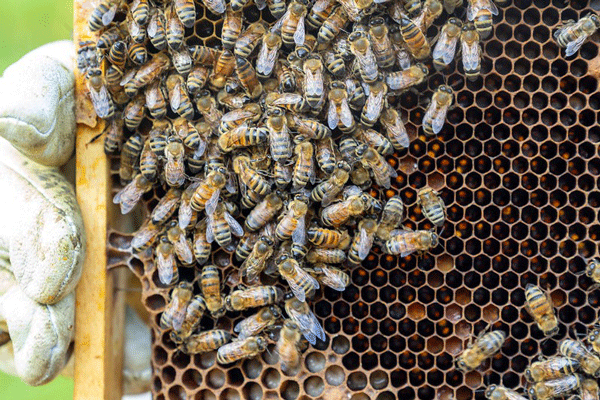
Honey Harvesting and Processing
Honey harvesting is one of the most rewarding aspects of beekeeping. Proper harvesting and processing techniques are essential to maintain the quality and flavor of your honey while ensuring the health and productivity of your honey bee colonies. This section covers essential practices for honey harvesting and processing.
When to Harvest
Timing your honey harvest is critical. Consider the following factors when deciding when to harvest:
- Nectar flow: Harvest honey after the primary nectar flow in your area has ended, typically in late spring or early summer.
- Honey maturity: Ensure that at least 80% of the honey frames are capped, indicating that the honey has reached the appropriate moisture content and is ready for extraction.
- Colony needs: Leave enough honey in the hive to support the colony’s nutritional needs, especially during winter months or periods of nectar dearth.
Removing Frames
To remove honey-filled frames from the hive, follow these steps:
- Wear protective gear, and use a smoker to calm the bees.
- Remove the hive cover and any supers containing brood, ensuring that the queen remains in the hive.
- Gently brush or shake the bees off the honey-filled frames, taking care not to injure the bees.
- Place the removed frames in a bee-proof container or an empty hive body for transportation to the extraction area.
Honey Extraction
Extract honey from the frames using one of the following methods:
Manual Extraction
For small-scale beekeepers, manual extraction is an affordable and straightforward option. To extract honey manually:
- Use a heated knife or uncapping fork to remove the wax cappings from the honey-filled frames.
- Place the uncapped frames in a honey extractor, which uses centrifugal force to spin the honey out of the cells.
- Open the extractor’s honey gate, allowing the honey to flow through a double strainer or cheesecloth to remove debris.
Crush and Strain Method
This method is suitable for small-scale beekeepers or those with limited equipment. To extract honey using the crush and strain method:
- Cut the comb from the frame, taking care to remove only the honey-filled areas.
- Crush the comb using a sanitized spoon or spatula to release the honey.
- Strain the crushed comb through a double strainer or cheesecloth to separate the honey from the wax and debris.
Honey Bottling and Storage
Once the honey has been extracted and strained, follow these steps to bottle and store your honey:
- Pour the strained honey into sanitized glass or plastic jars, leaving a small headspace at the top.
- Seal the jars with airtight lids to prevent moisture absorption and contamination.
- Store the jars in a cool, dark, and dry location to maintain the honey’s quality and prevent crystallization.
By following these honey harvesting and processing techniques, you can ensure a high-quality, flavorful product that retains its natural properties while maintaining the health and productivity of your honey bee colonies.
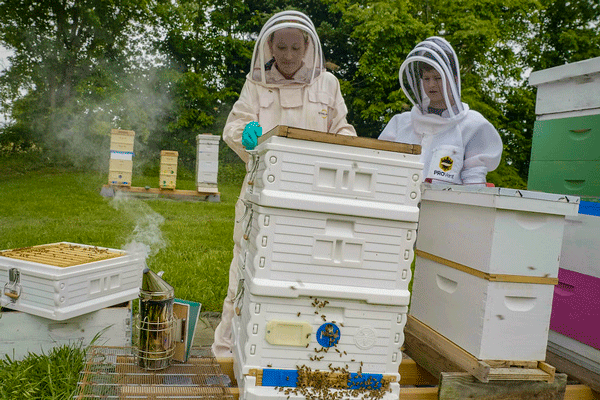
Winter Preparation
Winter can be a challenging time for honey bees, with cold temperatures, limited forage, and reduced colony activity. Proper winter preparation is essential to ensure the survival and health of your colonies during this critical period. This section covers essential practices for winterizing your apiary.
Assessing Colony Health
Before winter arrives, perform thorough hive inspections to assess colony health. Address any issues, such as disease or pest infestations, before winter sets in. A healthy colony is more likely to survive the winter months.
Ensuring Adequate Food Stores
Adequate food stores are critical for colony survival during winter. Ensure that each colony has sufficient honey or sugar syrup stores to last the entire winter, typically 60-90 pounds (27-40 kg) of honey. If necessary, feed your bees sugar syrup or fondant during the fall to supplement their food stores.
Reducing Hive Space
As the colony size decreases during winter, it’s essential to reduce the hive space to help the bees maintain the optimal temperature. Remove empty supers and consolidate frames with honey and pollen stores to minimize the area the bees must heat.
Insulation and Ventilation
Proper insulation and ventilation help maintain hive temperature and reduce moisture buildup, which can be harmful to the bees. Consider the following measures:
- Add insulation to the hive’s outer cover and inner walls to help retain heat.
- Provide adequate ventilation by creating upper entrances or using moisture boards to allow excess moisture to escape.
- Avoid wrapping the hive in materials that trap moisture, such as plastic.
Wind Protection
Protect your hives from strong winter winds by placing them in a sheltered location, using windbreaks, or constructing a temporary barrier with materials like hay bales or wooden planks.
Mouse Guards
Install mouse guards at the hive entrances to prevent rodents from entering the hive and causing damage during winter. Ensure that the guards do not obstruct the bees’ access or ventilation.
Limiting Disturbances
During winter, limit hive inspections and disturbances to minimize heat loss and stress on the bees. Only open the hive when absolutely necessary and avoid opening it during extremely cold or windy weather.
By following these winter preparation practices, you can help ensure the health and survival of your honey bee colonies during the challenging winter months, paving the way for a successful beekeeping season the following year.
Midwest Beekeeping Frequently Asked Questions (FAQs)
-
What is the best time to start beekeeping? The best time to start beekeeping is in the spring when colonies are expanding, and there is abundant forage available. This timing allows the bees to build up their population and resources before winter.
-
How often should I inspect my hives? During the active season, inspect your hives every 7-10 days to monitor colony health, check for disease and pests, and ensure adequate space for brood rearing and honey storage.
-
How much honey can I expect to harvest from a single hive? Honey production varies depending on factors such as colony strength, forage availability, and weather conditions. On average, a healthy hive can produce 50-100 pounds (23-45 kg) of honey per year.
-
How can I prevent swarming in my hives? Swarm prevention measures include providing adequate space, maintaining young queens, using swarm-resistant bee races, and clipping the queen’s wings. Regular hive inspections can also help detect early signs of swarming, allowing you to take action promptly.
-
When should I requeen my colonies? Regularly requeening every 1-2 years helps maintain optimal colony performance by ensuring a young, productive queen with strong pheromone production. If you observe signs of poor queen performance, consider requeening to address the issue.
-
How do I treat my hives for pests and diseases? Integrated Pest Management (IPM) is a holistic approach to treating pests and diseases that combines cultural, mechanical, biological, and chemical control methods. Regular hive inspections, proper hive sanitation, and maintaining healthy colonies are key components of IPM.
-
How can I prepare my hives for winter? Winter preparation includes assessing colony health, ensuring adequate food stores, reducing hive space, providing insulation and ventilation, protecting hives from wind, installing mouse guards, and limiting disturbances during winter.
-
What equipment do I need to start beekeeping? Essential beekeeping equipment includes a hive (consisting of a bottom board, brood boxes, supers, frames, and covers), protective clothing (such as a bee suit, gloves, and veil), a smoker, a hive tool, and a bee brush. Additional equipment for honey extraction and processing may be required as your operation grows.


